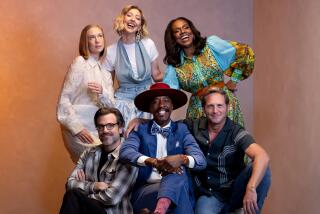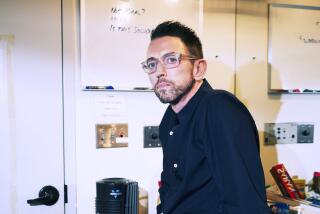Reader to Reader
- Share via
I had to chuckle when reading Cynthia Morris’ letter (March 3) in defense of popular entertainer Eminem, who she says “uses compositional techniques similar to the tone clusters used by Penderecki and Nono. . . .”
Why are so many clamoring to deify or vilify this guy? Eminem is just this generation’s Andrew Dice Clay, with this generation’s hot record producer, Dr. Dre, as his musical mentor. I don’t want to downplay their talents, but somehow I doubt Dre’s doctoral thesis was on Klangfarbenmelodie. Let’s leave the “compositional techniques” to the composers.
JAMES GRIGSBY
Redondo Beach
*
Lance Jencks’ delightfully revisionist interpretation of the ‘50s hit “Tell Laura I Love Her” as a lesbian romance with a girl dying in a car crash is unique, but it won’t quite fly.
We might accept Laura’s lover’s name as Tommi with an “i” and even assume it to be an equal-opportunity stock-car race that turned tragic, but the notion of a wedding ring would have been impossible anywhere on the planet during the ‘50s.
CHUCK HAMMILL
Los Angeles
*
No question that “I Love Lucy” did not sweeten its laugh tracks, but Gregg Oppenheimer’s March 3 letter stating that Charlie Douglass, inventor of the laugh machine, used “Lucy’s” laughs as the basis for his box is partially incorrect.
Douglass was one of our dubbing mixers on the “Burns & Allen” shows during the ‘50s. They were shot without an audience (unlike “Lucy,” which was shot in front of a live audience) and weeks later the shows were previewed in front of an audience recording the live laughs simultaneous with holding down the on-screen dialogue. Those laughs subsequently were mixed into the final show.
Douglass, at that time, asked if he could use these laughs as the basis for his new invention. The laughs on most of the sitcoms today are frequently these clean “Burns & Allen” laughs.
STANLEY FRAZEN,
Supervising film editor,
“Burns & Allen,” Studio City


